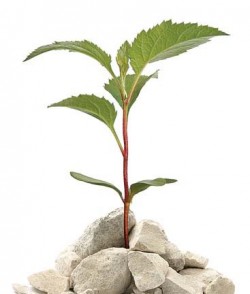Letters – Our readers write: Spring 2012
Letters published in the SPRING 2012 edition of In The Hills magazine.
Meetings with remarkable trees
I am an amateur but enthusiastic naturalist in eastern Ontario. Through the years, I must admit to largely ignoring the trees as I move about among them looking for something of interest. So often our focus at the distance blinds us to what is right in front of us.
“Meetings with Remarkable Trees” (autumn 2011) had a fine selection of photos, and the smaller inserts were a great way to get to know the trees up close. We have an old and expiring tree on our property, which I do talk to from time to time. Don Scallen’s article made me feel that talking to a tree is maybe not as crazy as the rest of my family think it is. I’m guessing he too talks to a tree from time to time. It will be our little secret.
The article reminds me of the Ents (ancient trees) in Tolkien’s Lord of the Rings. They had a lot of slow-moving wisdom and power, and were great characters in the books. Yes, there is something slow and special about trees, especially big old trees like the ones the article focused on.
Thank you, Don Scallen, for your fine article and for a wonderful reminder to appreciate the trees.
Brian Naulls, Grafton
Energy use question
In your spring 2011 issue’s “Countryside Digest,” you said that Canada is the highest per capita user of energy – 96,000 kWh per person. (You see, we read and re-read your magazine, especially in winter!)
We bought our farm with an oil heater installed in the home, but added a heat pump to improve the environment and save on home heating costs, so we use more electricity than we once did. But the total energy consumption – oil combustion plus electricity – is much reduced.
I must therefore ask whether your figure for energy use per capita included energy generated by carbon-fuel combustion, or if it was limited to electrical energy alone. If the latter, it isn’t quite fair to Canadians with heat pumps.
It is also not fair – and yours is not the only publication that indulges in this – to compare Canadian energy consumption with that of nations with more benign climates. It costs more energy to survive in the North.
Charles Hooker, Orangeville
Editor’s reply: The figure for energy use used in the CPPA Monitor, from which the item was excerpted includes energy from carbon-fuel combustion. Yes, it takes more energy to “survive” in the north.
Spirit of Christmas
I absolutely adored your winter issue cover by Shelagh Armstrong and the accompanying short story “Spirit of Christmas” by John Denison. As a one-horse owner of 35 years (he’s a Morgan, what can I say, he’s as tough as nails!), the cover transported me back to a time when I was a horsestruck young girl still in love with Christmas. The night hues and colours, and the simple majesty of the horses evoked in me the magic of the holidays when I would spend many a Christmas Eve with my beloved friend. Thank you to the artist and author for this gift.
Tracey Holmgren, Mono
Surviving in the north
Tempting Providence
It is so nice to see the struggles of Newfoundland brought to life, and how difficult life was on the island. Being of the younger generation from Newfoundland, I have experienced hard times, but not to the extent of the earlier years. I sit and listen to the older generation talk and tell stories about how it used to be, and often wonder how in God’s name they even survived. I guess it just makes us the proud people we are today!
Peter Yetman, Brampton
Massey Chapel window
Thank you for the prominent inclusion of the window in the letter from Paul Aird (winter 2011). There is, however, a problem in his attributing the window to me. It is not an uncommon mistake in a medium where the design and execution can be done by different people.
In this case there is a plaque that states, “The stained glass is dedicated to the memory of Alice and Vincent Massey … The design symbolizing the Masseys’ love of Canadian nature was created and given to Hart House by Will Ogilvie who also painted the mural in the chapel. The stained glass work was done by Rosemary Kilbourn in the studio of Yvonne Williams.”
Will Ogilvie, who at that time was also living “in the hills,” gave the full-size drawing of the window to me, to choose the glass and paint it with the iron oxide and gum medium which is fired into the glass. This gives the lines of the drawing the tone and movement over the surface, which simply carry out and re-emphasize the original design.
My own work in glass looked quite different, and I include a picture of a small window done at about the same time. It illustrates some lines from T.S. Eliot: “When the tongues of flame are infolded / Into the crowned knot of fire / And the fire and the rose are one.”
Will Ogilvie is well known for his wonderful and unique watercolours of Georgian Bay, among other things, and the window includes some of the birds, flowers, frogs and insects that he encountered there.
Again, you have a very interesting collection of articles in a beautiful format. We are very fortunate to have this way of connecting with neighbours who would otherwise be unknown to many of us.
Green Gravel
“Green Gravel” by Tim Shuff (autumn 2011) is a cogent and clearly written article on the issues that surround aggregate extraction in Ontario. It offers some hope for reducing the current high level of conflict between proponents and communities. The SERA principles he describes include “the environmental and water impacts and site stewardship,” but they fail to address the disproportionate impact of super-sized aggregate developments.
Highland Farms is applying to mine a colossal 2,400 acres in Melancthon. It beggars belief that the net effects of larger and larger industrial developments do not have a profound social and environmental impact on the community.
In the Town of Caledon, from Kennedy Road in Caledon Village to the town border at Winston Churchill Blvd, there is corridor of 3,800 acres of licensed quarries and pits, with another 200 acres of proposed pits seeking licences, as well as 600 acres of properties amassed by gravel operators for which licences have not yet been applied. Taken together, the collective mass of operating mines in this part of Caledon is potentially 4,600 acres.
In 2007, a study funded by the Social Sciences and Humanities Research Council reported that Caledon contained the “largest series of gravel pits in North America.” When is the cumulative impact of progressively larger industrial developments too much? This needs to be addressed before we continue adding acreage to mega sites like this.
Our community organization, REDC, People for Responsible Escarpment Development Caledon, is preparing to challenge one of the newest licence applications for a property which abuts existing operations, the McComick Pit on Heart Lake Rd, a 75-foot-below-the-water-table proposition.
 In recent geological maps of our area, our conservation authority no longer bothers to distinguish between the few modest natural lakes and the numerous acres of pit lakes which result when the aquifer is permanently breached during mining operations. Nowadays, all are “lakes.” The irony of the Forks of the Credit Provincial Park dividing a wasteland of mines stripped of biodiversity is not lost on those of us who live here. Nor that our region in the Niagara Escarpment is recognized by UNESCO as a World Biosphere Reserve, a precious world resource equal to the Serengeti, but obviously not as valuable as gravel.
In recent geological maps of our area, our conservation authority no longer bothers to distinguish between the few modest natural lakes and the numerous acres of pit lakes which result when the aquifer is permanently breached during mining operations. Nowadays, all are “lakes.” The irony of the Forks of the Credit Provincial Park dividing a wasteland of mines stripped of biodiversity is not lost on those of us who live here. Nor that our region in the Niagara Escarpment is recognized by UNESCO as a World Biosphere Reserve, a precious world resource equal to the Serengeti, but obviously not as valuable as gravel.
Size and cumulative impact need to be addressed if the SERA Green Certification audit process is to be truly constructive.
Christine Shain, President, REDC
People for Responsible Escarpment Development Caledon Inc.
Editor’s note:At the request of Councillor Richard Paterak, the Town of Caledon has prepared a map showing the Greenbelt Plan, Oak Ridges Moraine and Niagara Escarpment planning areas, as well as aggregate resource and aggregate reserve lands in the municipality. Paterak notes that the 4,800 acres referenced in this letter represent to gross acreage owned by aggregate companies; however, not all the acreage is licensed
Online In The Hills
We welcome your comments! For more commentary from our readers, or to add your own thoughts on any of the stories, please add a comment at the bottom of any article. You can also send your letters by e-mail to [email protected] or use our handy submission form. Please include your name, address and contact information. In the Hills reserves the right to edit letters for publication.
.








